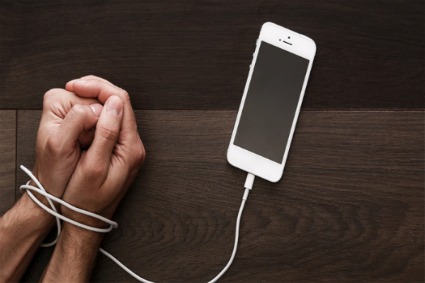
Why Can’t We Put Our Cell Phones Down?
There is no denying that cell phones are an important part of most of our daily lives. Our insatiable need for information can lead to obsessive, addictive and unsafe behavior patterns. Here are some interesting findings:
- On average, adults check their phones 110 times per day
- New study links phone use and mental health issues in teens
- 10% of time is spent browsing and 90% using apps
- 35% of people think of their cell phones when they wake up while only 10% of people think of their significant others
- 75% of teens and young adults sleep with their phone next to the bed and awaken several times to check alerts
- 32% of car accidents involve phone usage
- Many people never turn off their cellphones
- Nomophobia – the fear or separation anxiety associated with not having a mobile device
In an instant, our cell phones connect us to social media, news, sports, shopping, gaming, driving directions, restaurants, talking, email, texting, music and the list goes on. Many people can self-regulate their device use while others find it difficult to put down. You can’t go anywhere and not see people glued to their phones. People are losing moments with each other and not experiencing life. Here are a few signs that your cell phone usage may be causing a problem:
- Need to respond immediately
- FOMO (Fear of Missing Out) on the latest information
- Not paying attention to family and friends
- Poor performance at school or work
- Experience phantom cell phone vibrations
- Spend more time connecting with people on-line than in real life
- Feel restless, stressed and anxious if away from the phone for more than an hour
Limiting Use
In July 2017, Washington State took a bold step in passing a new Distracted Driving Law. Drivers are no longer permitted to hold an electronic device in the car while they are driving, stopped in traffic or a stoplight. Other provisions in the Washington law create secondary offenses for eating, putting on make-up and shaving if you are pulled over for a primary offense. A 2015 Washington Traffic Safety Commission study found that 1 in 10 drivers were distracted in some way while on the road, and that 70 percent of those observed were using their phone.
Experts recommend setting usage limits as a great first step to managing device time. These include:
- Not sleeping with the phone in the bedroom
- Set specific times for device use at home, work and school
- Deleting apps where you spend the most time
- Putting the phone away during meals
- Turn off the phone when you are with friends
- Spend time away from your phone
Many people can manage their devices and will find the above recommendations easy to do. Others will feel anxiety and stress just reading the list. If you are in the latter group, you are not alone. Phone obsession and addiction are real and there are options for therapy and treatment. Something to think about . . .
Submitted by: Amy Noel

